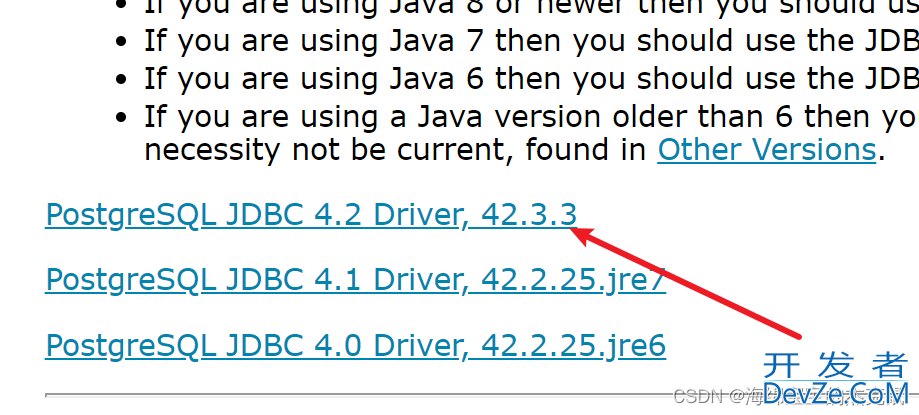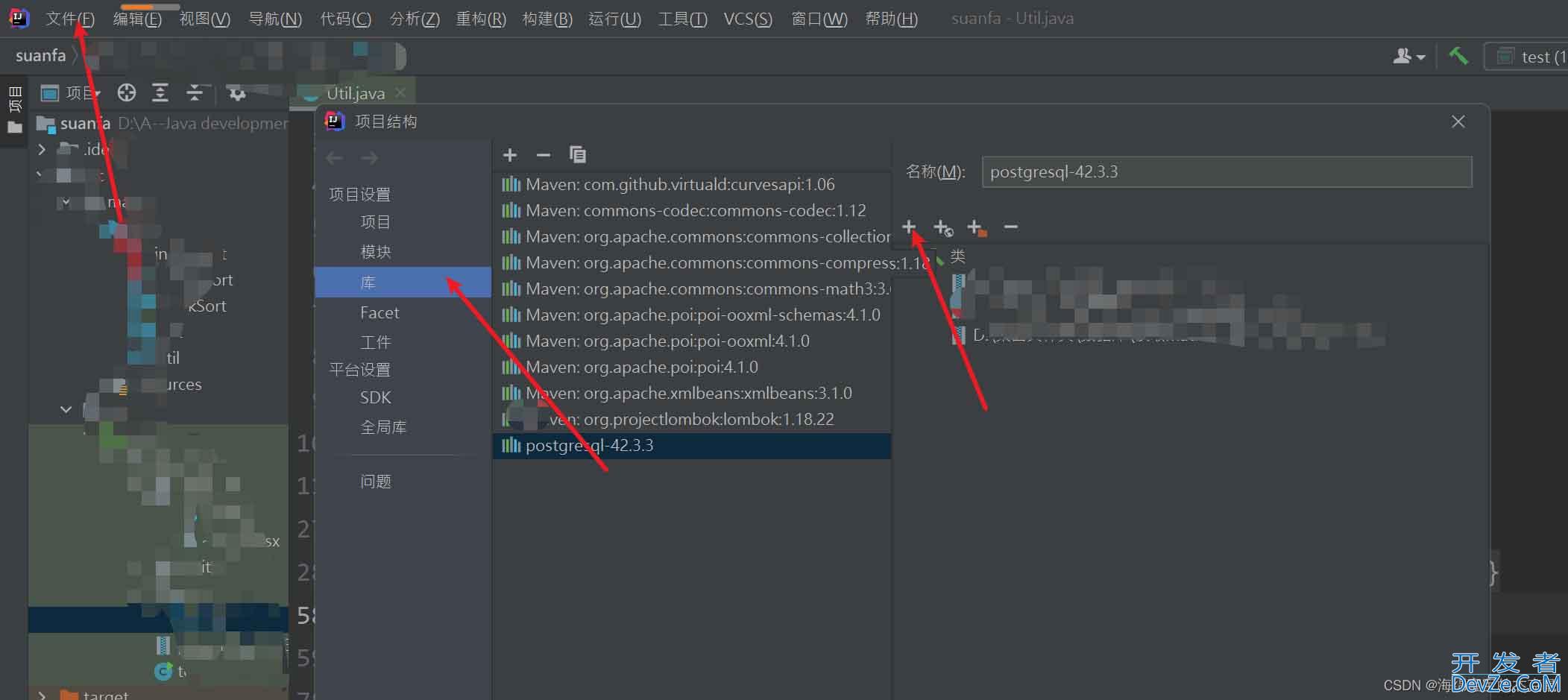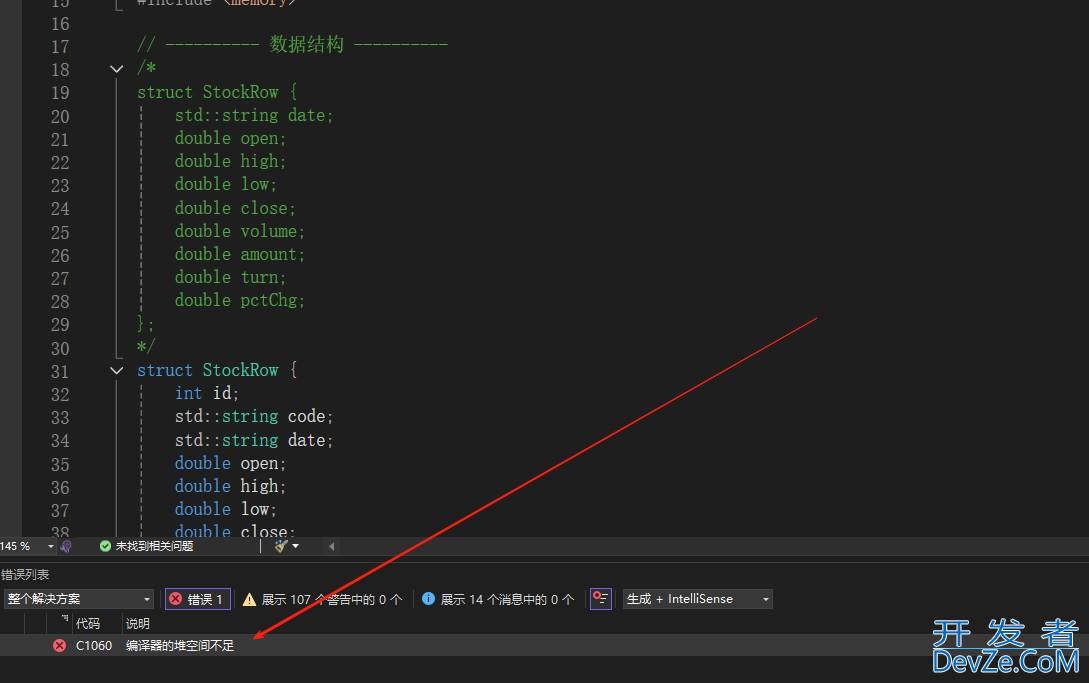Java连接PostgreSql数据库及基本使用方式
目录
- 一)准备工作
- 1.下载链接需要的jar包
- 2.下载之后添加到模块里
- 3.创建一个工具类Util
- 二)连接
- 三)查询
- 四)添加
- 五)删除数据
- 六)封装之后的代码总和
- 封装类
- 使用测试类
- 总结
我是应用Java封装的思想将所有的方法封装到了一个类里。
一)准备工作
1.下载链接需要的jar包
选择最新版本即可。

2.下载之后添加到模块里

3.创建一个工具类Util
书写空参构造,用于对数据库的全部操作。
二)连接
所需内容:数据库名,端口号,数据库地址,数据库用户名,密码
public static Connection Connect(){
Connection c = null;
try {
Class.forName("org.PostgreSQL.Driver");
c = DriverManager
.getConnection("jdbc:postgresql://服务器地址,本机写127.0.0.1:服务器端口号,默认5432/链接的数据库名",
"数据库用户名", "数据库密码");
} catch (Exception e) {
e.printStackTrace();
System.err.println(e.getClass().getName()+": "+e.getMessage());
System.exit(0);
}
System.out.println("Opened database successfully");
return c; //记得返回一下这个对象,后面一直在用
}
三)查询
普通版本查询:数据库有三个字段,时间time、地点location、温度temperature
public static void select() {
//与数据库建立链接
Connection c = Util.Connect();
Statement stmt = null;
try {
sphptmt = c.createStatement();
String sql = "SELECT* FROM tmps;";
ResultSet rs = stmt.executeQuery(sql);
while (rs.next()) {
Date date = rs.getDate(1);
String location = rs.getString("location");
float temperature = rs.getFloat("temperature");
System.out.println("date" + date);
System.out.println("location:" + location);
System.out.println("temperature:" + temperature);
}
//关流操作
rs.close();
stmt.close();
c.close();
} catch (SQLException throwables) {
throwables.printStackTrace();
}
}
下图中这种方法属于进阶方法,只需要输入sql语句即可将任意表中的数据都按照map集合的方式返回
public static List<HashMap<String,Object>> Select(String sql){
//1、与数据库建立链接
Connection c = Util.Connect();
//2、创建操作对象
Statement stmt = null;
//3、创建返回最终查询的数据集合
List<HashMap<String ,Object>> list=new ArrayList<>();
try {
//2.1、初始化操作对象
stmt = c.createStatement();
//4、执行需要执行的sql语句
ResultSet rs = stmt.executeQuery(sql);
//3.1开始封装返回的对象
ResultSetMetaData metaData = rs.getMetaData();//获取全部列名
int columnCount = metaData.getColumnCount();//列的数量
//5、读取数据
while (rwww.devze.coms.next()) {
HashMap<String,Object> map=new HashMap<>();
for (int i = 1; i <= columnCount; i++) {
//getColumnName获取列名
String name = metaData.getColumnName(i);
//获取对应的元素
Object object = rs.getObject(i);
map.put(name,object);
}
list.add(map);
}
//6、关流操作
rs.close();
stmt.close();
c.close();
} catch (SQLException throwable) {
throwable.printStackTrace();
}
return list;
}
四)添加
返回值是bool类型,表示是否添加成功。
***需要比查询多添加一句***
connect.setAutoCommit(false);
public static Boolean Insert(Stri开发者_开发培训ng sql){ //1、与数据库建立链接 Connection connect = Util.Connect(); //2、创建操作对象 Statement stmt = null; int count = 0; try { //2.1、初始化创建对象 stmt=connect.createStatement(); //3、添加特殊语句。 connect.setAutoCommit(false);//之前不用 //4、执行添加操作 count = stmt.executeUpdate(sql); //5、关流 stmt.close(); connect.commit(); connect.close(); } catch (SQLException throwables) { throwables.printStackTrace(); } return count!=0; }
五)删除数据
public void Delete(String sql) {
//1、链接数据库
Connection c = this.Connect();
Statement stmt = null;
try {
c.setAutoCommit(false);
stmt = c.createStatement();
stmt.executeUpdate(sql);
c.commit();
c.close()
stmt.close();
} catch (SQLException throwable) {
throwable.printStackTrace();
}
}
六)封装之后的代码总和
封装类
package postSQL.Util;
import java.sql.*;
import java.util.ArrayList;
import java.util.HashMap;
import java.util.List;
public class Util {
private final Connection connect;
private final String userName;
private final String passWord;
private final String ipAddress;
private final String databaseName;
private final String port;
//构造方法
public Util(String userName, String passWord, String ipAddress, String databaseName, String port) {
this.userName = userName;
this.passWord = passWord;
this.ipAddress = ipAddress;
this.databaseName = databaseName;
this.port = port;
this.connect = this.Connect();
}
//建立链接
private Connection Connect() {
Connection c = null;
try {
Class.forName("org.postgresql.Driver");
c = DriverManager
.getConnection("jdbc:postgresql://" + this.ipAddress + ":" + this.port + "/" + this.databaseName,
this.userName, this.passWord);
} catch (Exception e) {
e.printStackTrace();
System.err.println(e.getClass().getName() + ": " + e.getMessage());
System.exit(0);
}
return c;
}
//关流操作
public void close() {
Connection c = this.connect;
try {
编程客栈 c.close();
} catch (SQLException throwables) {
throwables.printStackTrace();
}
}
//查询
public List<HashMap<String, Object>> Select(String sql) {
//1、与数据库建立链接
Connection c = this.connect;
//2、创建操作对象
Statement stmt = null;
//3、创建返回最终查询的数据集合
List<HashMap<String, Object>> list = new ArrayList<>();
try {
//2.1、初始化操作对象
stmt = c.createStatement();
//4、执行需要执行的sql语句
ResultSet rs = stmt.executeQuery(sql);
//3.1开始封装返回的对象
ResultSetMetaData metaData = rs.getMetaData();//获取全部列名
int columnCount = metaData.getColumnCount();//列的数量
//5、读取数据
while (rs.next()) {
HashMap<String, Object> map = new HashMap<>(编程);
for (int i = 1; i <= columnCount; i++) {
//getColumnName获取列名
String name = metaData.getColumnName(i);
//获取对应的元素
Object object = rs.getObject(i);
map.put(name, object);
}
list.add(map);
}
//6、关流操作
rs.close();
stmt.close();
//c.close();
} catch (SQLException throwable) {
throwable.printStackTrace();
}
return list;
}
//插入操作
public Boolean Insert(String sql) {
//1、与数据库建立链接
Connection connect = this.connect;
//编程客栈2、创建操作对象
Statement stmt = null;
int count = 0;
try {
//2.1、初始化创建对象
stmt = connect.createStatement();
//3、添加特殊语句。
connect.setAutoCommit(false);//之前不用
//4、执行添加操作
count = stmt.executeUpdate(sql);
//5、关流
stmt.close();
connect.commit();
//connect.close();
} catch (SQLException throwables) {
throwables.printStackTrace();
}
return count != 0;
}
//删除
public void Delete(String sql) {
//1、链接数据库
Connection c = this.Connect();
Statement stmt = null;
try {
c.setAutoCommit(false);
stmt = c.createStatement();
stmt.executeUpdate(sql);
c.commit();
stmt.close();
} catch (SQLException throwable) {
throwable.printStackTrace();
}
}
}
使用测试类
public static void main(String[] args) {
//构造方法
Util util=new Util("用户名","密码",
"ip地址","数据库名","端口号");
//插入语法
Boolean insert = util.Insert("insert into tmps (time,location,temperature)" +
" values('2022-1-1 16:00:00','场景八',112.3);"); //插入
//删除
util.Delete("delete from tmps t where t.location='场景七' ");
//查询
List<HashMap<String, Object>> select = util.Select("select * from tmps");
//关流
util.close();
System.out.println(select);
}
总结
以上为个人经验,希望能给大家一个参考,也希望大家多多支持我们。






 加载中,请稍侯......
加载中,请稍侯......
精彩评论